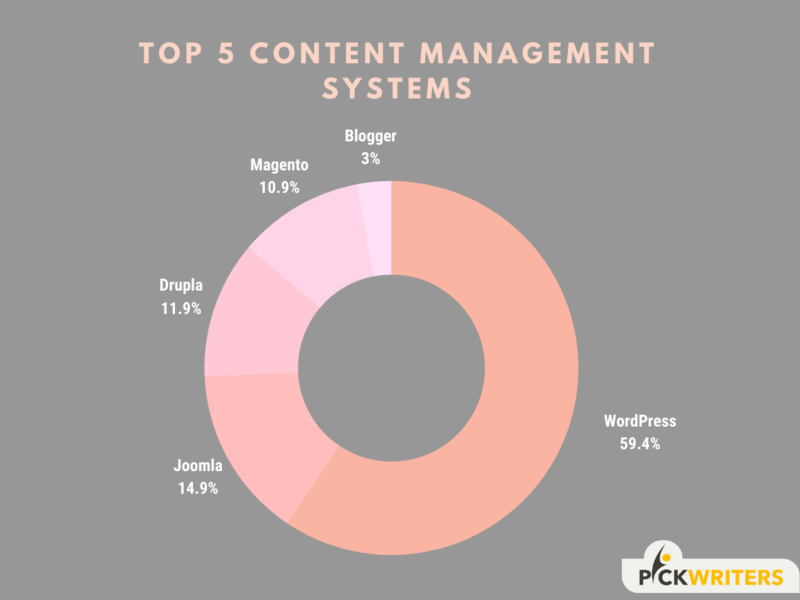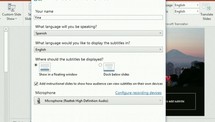Guide to the Successful Multilingual Website Translation
Doing business today means having some kind of online presence. In today’s globalized world, creating and maintaining the website has almost become a must for any firm you can possibly imagine. This especially concerns international businesses. For those, simply having a website will not be enough. International companies must create a multilingual website in order to grow their online presence in target countries. Yet, just to translate the website is also not enough today as the content has to appeal to the audiences as much as possible. That is where localization enters the game.
Website Translation vs. Localization
Languages are extremely diverse at times, hence, a mere translation may often be not enough. Every language has its specific slang, dialects, and idioms, while each country has its own culture, traditions, values, and trends. Many of the listed things cannot be covered with a mere translation. Yet, when targeting a consumer in another country, all of those things have to be considered. All of this leads to the point that simply translating a website is not enough.
Although localization is closely associated with translation and is somewhat similar, it brings the translation to a higher level. While content translation is basically a mechanical work of rewriting something in the target language based on its meaning in the base language, localization is transposing that meaning into the target language. More specifically, instead of just copying from one language to another, localization adapts the content considering the culture of the target country and specifics of the target language. This results in the content that is extremely appealing and relatable to the target audience and seems natural as if created in the target country. This will be not far from the truth as for localization it is best to hire a freelance website translator or a website localization agency based in and originated from the target country. This way, a native speaker will work on your localization and ensure the most accurate adaptation. But what does localization do after all?
Key Elements and Features of Website Localization
So, localization is a process of adapting the content rather than simply translating it. While it’s clear that there are many things to consider for this process, there are a few top priorities that make localization complete and successful.
- Language elements and regional dialects. That involves the word choice, slang, and other language specifics. If you’d like, for example, to translate a web page into Spanish, you would need to specify whether that be European Spanish or American Spanish.
- Cultural elements. Considering language specifics is great and sometimes can even be enough. Yet, to make the content you want to translate appealing, authentic, and attractive, you have to make sure it sounds normal for the target audience. That’s when you need to take the local pop culture, trends, events, values, and standards into account.
- Transitional/financial elements. As the content is specific enough and satisfies your customers, they might like to buy from you. Making transactions in local currency or providing a currency converter is a great idea as your customers won’t need to calculate the price they will actually pay using their credit card.
- Communication elements. In order for your customers to trust you, they have to be sure they can contact you. So, obtaining and providing your customers with local phone numbers, addresses, and customer support in their language is always a great idea. If that works for bilingual websites, it’ll certainly work for multilingual ones as well.
- Navigation elements. So, you’ve got your website perfectly translated and precisely localized, and everything looks awesome. Yet, your customers might enter your website in the original language and find it hard to switch to their language. That’s why making navigation as clear and convenient as possible is one of the key elements of localization.
Reasons Why You Should Have a Multilingual Website
As we can see already, the translation web and localization of the website make powerful things indeed. You can attract customers more sufficiently and enter an international market as smoothly as possible. Yet, why and how does that happen exactly?
- Penetration of bigger markets. Despite English being the most spoken language in terms of population, the internet steadily starts covering territories that do not speak English that much. Some of the most prospective countries with the rising number of internet users today are China, Japan, South Korea, France, Italy, and Latin American countries. In total, that’s much more people speaking languages other than English, so translating websites will soon become a natural thing to do.
- Increased sales. Selling your products to your customers is easier when they understand what, why, and from who they are buying. Research has shown that some customers even prioritize more convenient access to information about the product over the lower price when making a purchase at times.
- Improving customer-centricity. For any business, the customer must be on top of all other things. By adapting your website to the diversity of your customers you demonstrate your devotion to all of them, regardless of their location.
- Improved trust. Making your customers see that you set them as your top priority largely increases their trust and, hence, chances for more effective sales. On top of that, by translating webpages on your site and making them convenient in use, you’ll boost customers’ confidence in using your website to purchase something.
- Increased competitiveness. Going international is not the easiest feat, yet, making your website translated gives you the shortcut. While your competitors might only start thinking about going international, you’ll be there already, accumulating a solid loyal customer base.
- Accumulated international SEO. Internet traffic is a very useful thing today that makes you much easier to find through search engines, such as Google. There’s a lot of examples of the digital content translated for SEO online, so you don’t need to go far to see what the means. The more visits you get, the higher you are in the search results. So, satisfying more search requests in different countries get you in Google’s top list in no time.
- Cost-effectiveness. Last, but not least, one of the top reasons to get your website translated is that such an operation won’t cost you much. You can check out some of the leaders in this industry and see for yourself that even the best translation site does not charge a fortune. So not only web page translation is sufficient for your business but is also cost-effective.
Popular Languages to Translate the Website To
To translate a website is a very good idea, yet, only having an idea is not enough, it’s time for action. The main need for translating a site lies in the number of languages spoken throughout the world. You might think to yourself that English is spoken everywhere in the world, so why bother and translate a website into some other language. Well, English is kind of a language of globalization but it’s not as widespread as it seems. As of the end of 2019, only 27% of the top 100,000 websites were in English. This means that there were about three-quarters of the best sites in other languages. So, what are those popular languages? The table below shows that although English is really popular, it’s not the most spoken one and not even the second. There are lots of other languages to look into.
|
Position |
Language |
Native Speakers (in millions) |
|
1 |
Chinese Mandarin |
918 |
|
2 |
Spanish |
480 |
|
3 |
English |
379 |
|
4 |
Hindi |
341 |
|
5 |
Bengali |
228 |
|
6 |
Portuguese |
221 |
|
7 |
Russian |
154 |
|
8 |
Japanese |
128 |
|
9 |
Western Punjabi |
93 |
|
10 |
Marathi |
83 |
Useful information: Always read reviews of the best Portuguese translation services before making an order
Translation for Websites: Basic Options
Website translation is done using two basic models, human translation or machine translation. Both are still in use and both have their benefits and downsides, just as they might be used for different purposes.
Human Translation
Being rather self-explanatory, human translation involves a professional human translator. This model is more frequently used than machine translation mainly because of the need for localization, which becomes bigger over time, and because of the specificities, many languages have. For example, some words in a sentence may have different meanings depending on the context of the whole paragraph. Having read the previous passage, the human specialist will likely deliver the precise translation for the needed word in the needed sentence.
In addition, during the localization process, a lot of human factors have to be considered, such as the cultural specifics, slang, trends, etc. All of that can be done only by a human translator who relies on many different reliable sources as well as one’s own basic knowledge and common sense. The result will be exactly what localization implies, an adapted, authentic, and naturally-looking text.
Machine Translation
Despite human translation being more effective and widely used, machine translation still has its application in website translation processes. Machine translation is usually done by the special software that performs an automated translation. Some webmasters or website owners can make use of machine translation to translate the website entirely, yet, they face serious risks. Software designed for translation has numerous imperfections and may provide a very awkward and robotic-sounding result. This in turn may confuse the customers and damage the company one way or another.
Yet, machine translation can be valuable while making a prior translation of the website. Such a translation is the basis for the human translator’s further work. Such a model largely saves time and money for many companies.
See also: Why translation services is a top industry to start a business.
How to Translate a Website: 3 Basic Methods
While the previous two options related to translation performance, the following three major methods relate to the organization of the translated content. It is especially important in localization as it goes beyond the mere translation and needs everything to be organized. So, the main 3 methods of translated content organization are:
- Proxy-based solution. This technology creates a link between two servers used for storing the website’s content. One such server contains all the information in the website’s original language and another one in the target language. The benefit of using this technology lies in no need for back-end interference on the website owner’s side.
- CMS connectors are somewhat similar to proxy-based solutions, yet, are automated on the back-end side and are more simple in use. Essentially, CMS connector is an app that allows modifying a webpage to the user without deep expertise. So, by using a CMS connector, you can create and manage webpages in different languages without the need to involve a programming specialist.
- Application programming interfaces, or APIs, for short, are the sets of computer protocols, tools, and applications that allow acting within the software or an operating system. In translation, APIs are used for the exchange between the server with the content or a CMS and the computer system that manages the translation workflow.
Popular Content Management Systems
CMSs perhaps deserve separate attention because they have become very popular lately. Due to their high convenience and efficiency, the CMS became widely used even by bigger companies. This became especially relevant, particularly for website translation and localization. Some of the most popular CMSs are well-known even by non-experts and include such platforms as WordPress, Joomla, and Blogger. The diagram below shows the percentage of every CMS use.

Specifics of Website Translation
If you’re wondering how to translate a webpage, you must know that this process might differ largely from the traditional translation. The major things that make the website translation different are:
- The dynamic nature of content that gets embedded into the website’s code written mostly in HTML, JavaScript, and JSON programming languages.
- A rather complex set of systems and networks of platforms, servers, and contributors.
- Extremely fast development of the online business in general.
- Dynamic user demands.
In addition, website translation often involves the work with different content of a very diverse nature, so you might consider addressing a localization agency that specializes particularly in websites. You must also consider that your website will change over time, so you need to make sure that the localized content is consistent throughout as well as flexible. Finally, do not forget to make sure that the content of your multi-language website is in line with your overall company image.
The Best Way to Translate a Website: 7 Tips for Success
To conclude, it would be best to provide some of the highlights of website translation. While there are many more aspects to consider, the following lucky seven will certainly help you the most:
- Do not try to save money and effort on translation process as this is the basis for your multilingual website’s success.
- Make use of CMS connectors. They will save you time, money, and life force.
- Localize. Don’t just translate your website’s text. Make sure that the images, videos, and other content all go in line with the target country’s culture.
- Adapt formats and standards to ensure localization on a formal level.
- Make sure to be coherent in relation to local dialect. Do not target the website in European Spanish to Mexico.
- Get social media involved. You will increase your traffic and broaden the audience.
- Aim for accumulating the local SEO as it will bring you up high in search results.













